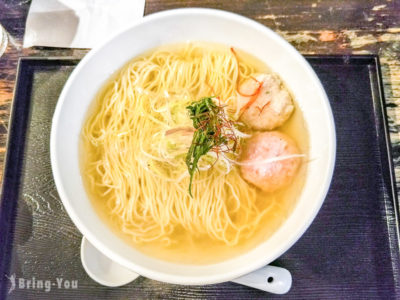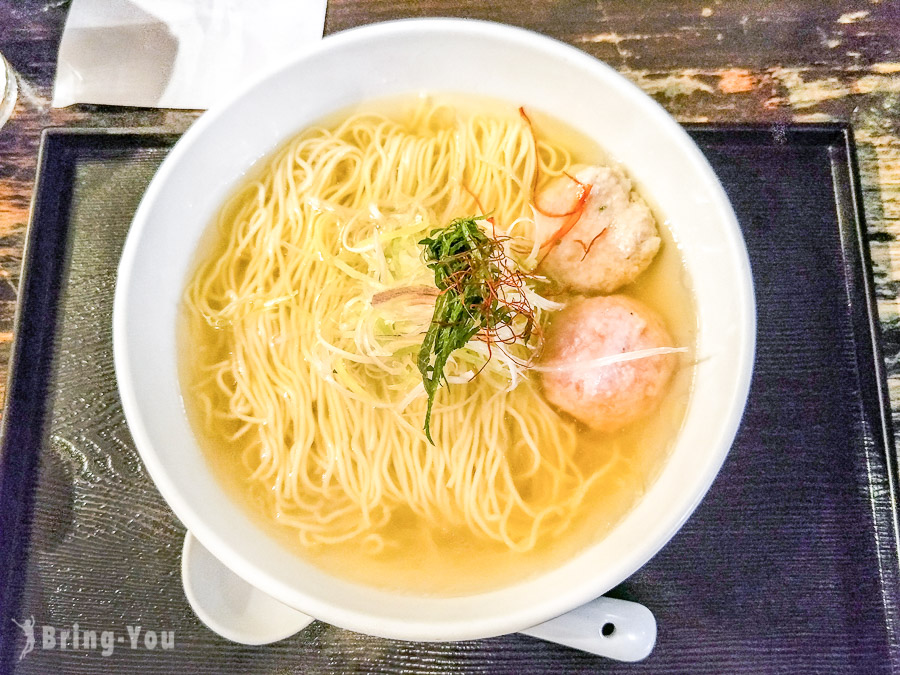This time, I came to Piāo’ér’s favorite shopping spot in Tokyo, Shinjuku Station. Piāo’ér has already tried most of the delicious food in Shinjuku and has started to explore international cuisine. On this day, Piāo’ér suddenly craved for ramen, but has already tried famous shops like Ichiran Ramen, Yuzu Ramen Afuri, and Santouka Ramen. Piāo’ér wanted to try a lighter and less oily ramen, so she searched for a popular seafood and fish bone ramen shop called “Menya Kaijin” on Google reviews or Tabelog reviews.
Read More: Shinjuku Travel Guide: 9 Best Activities In The Best Areas To Live in Tokyo
Where is Menya Kaijin?
- Address: 2F, 3-35-7 Shinjuku, Shinjuku-ku, Tokyo
- Transportation: Take the JR Yamanote Line and get off at the southeast exit of JR Shinjuku Station
- Business hours: Monday to Friday 11:00-15:00, 16:30-23:30, Saturday 11:00-23:30, Sunday 11:00-23:00
- Price: Starting from 1000 yen
- TABELOG=3.6 points, 1100 reviews
Menya Kaijin has two branches in Tokyo, one in Shinjuku and the other in Kichijoji. The Shinjuku branch is located near the east exit of Shinjuku Station. It is recommended to follow Google Maps as the restaurant is on the 2nd floor and the sign is not colorful and easy to miss.
Dining Environment at Ramen Restaurant Sea God
This time, I came around 17:30 on a weekday evening. When I walked up to this old apartment building in Shinjuku, I was a little scared. But I was surprised to see a bunch of people standing at the entrance on the second floor, already lining up!!! There were four groups ahead of us this time, and we waited for about 15-20 minutes to be seated. By the time we finished eating around 18:30, which is about the time when Japanese people have dinner, the line had already stretched all the way down the stairs to the first floor, and everyone in it was Japanese office workers, not tourists.
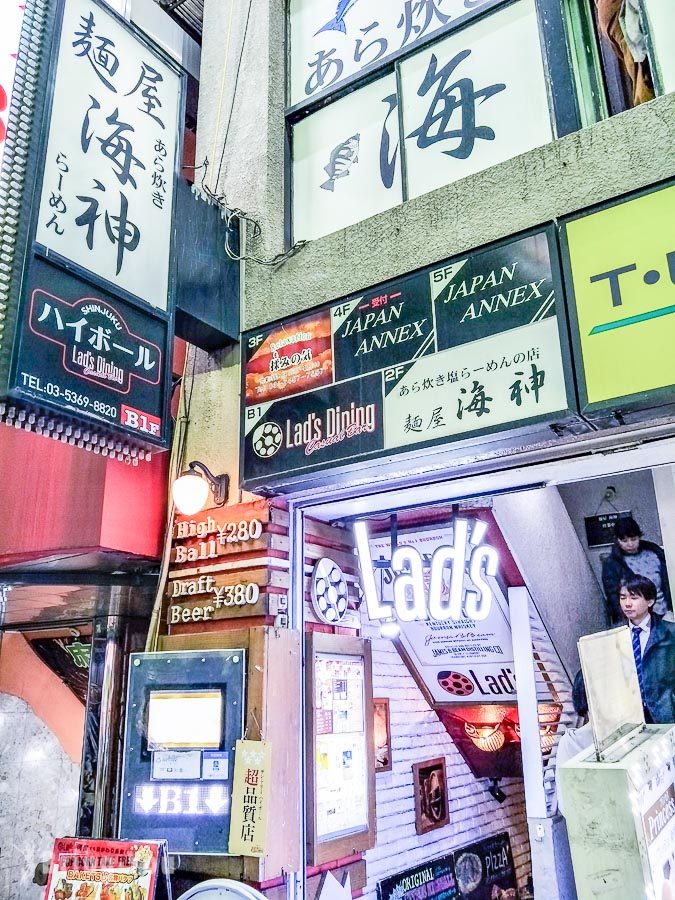
The signature dish of Menya Kaijin is seafood and fish bone ramen. Unlike the classic pork bone, salt, and soy sauce ramen that is known for being heavy and salty, in recent years, Japan has been increasingly popularizing a refreshing style of ramen. Menya Kaijin uses a variety of fish bones to make the soup base, and will cook it with fresh fish of the day that is in season and limited, so the soup base is never the same each time you come. The type of fish used in the soup base for the day will also be displayed on the restaurant’s wall.
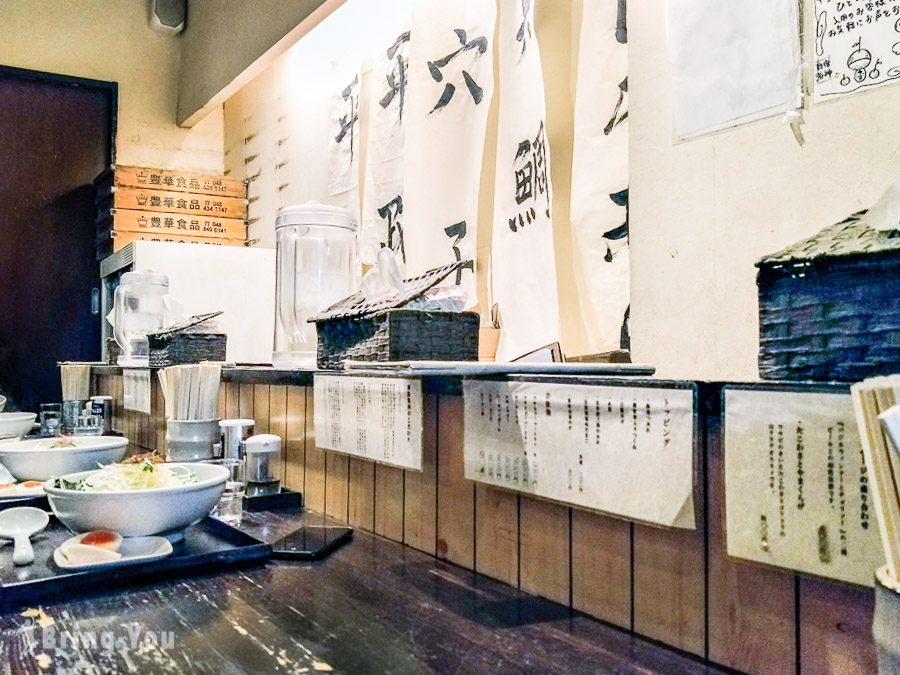
There are many celebrity signatures on the wall.
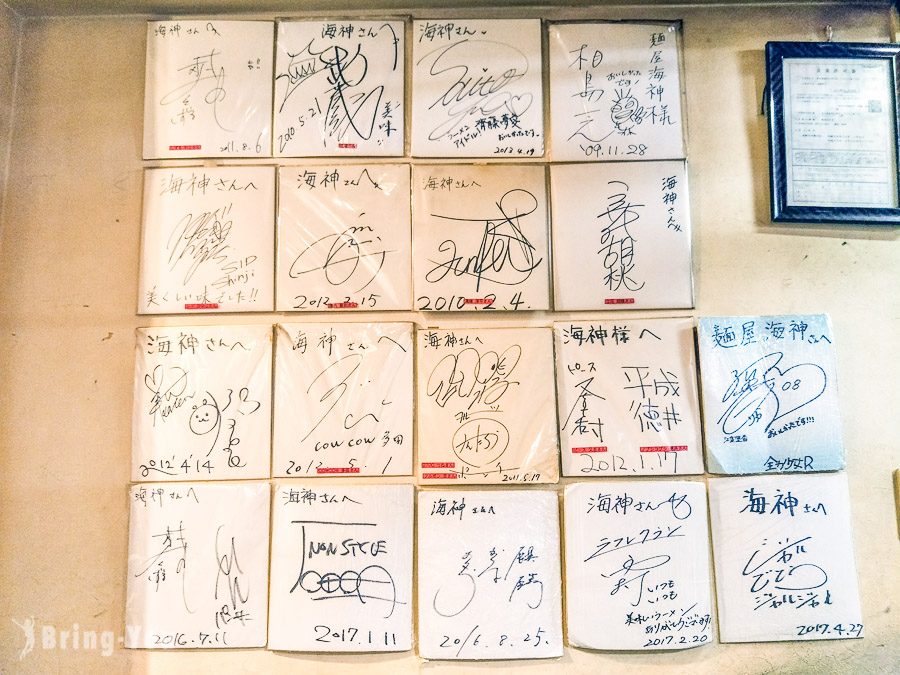
Rice Ball Ramen Menu of Menya Kaijin
While waiting in line outside the restaurant, the staff will come to ask for the number of people and provide a menu. The menu is available in Chinese, English, and Japanese, and also includes an introduction to the restaurant’s soup base. You don’t have to worry about any problems when ordering. The dish is seafood and fish bone ramen, which can be ordered spicy or non-spicy, with or without rice balls. Ramen restaurant Hai Shen also offers a free noodle refill service, so those with a big appetite can let the staff know when ordering.
- Salt-flavored seafood fish bone ramen + mackerel pickled rice ball (980 yen)
- Salt-flavored seafood fish bone ramen / without rice ball (830 yen)
- Spicy salt-flavored seafood fish bone ramen + mackerel pickled rice ball (1030 yen)
- Spicy salt-flavored seafood fish bone ramen / without rice ball (880 yen)
Xin Yan Seafood Fish Bone Ramen + Mackerel Sashimi Rice Ball (1030 yen)
This time, Piao Er and Xiao V each ordered a bowl of salted seafood fish bone ramen, one spicy and salty seafood fish bone ramen with rice ball.
The soup base for both spicy and original ramen is the same fish bone broth, and the ingredients are also the same, except for one fish ball and one shrimp ball in addition to the ramen and soup. The only difference is the addition of chili oil in the spicy version.
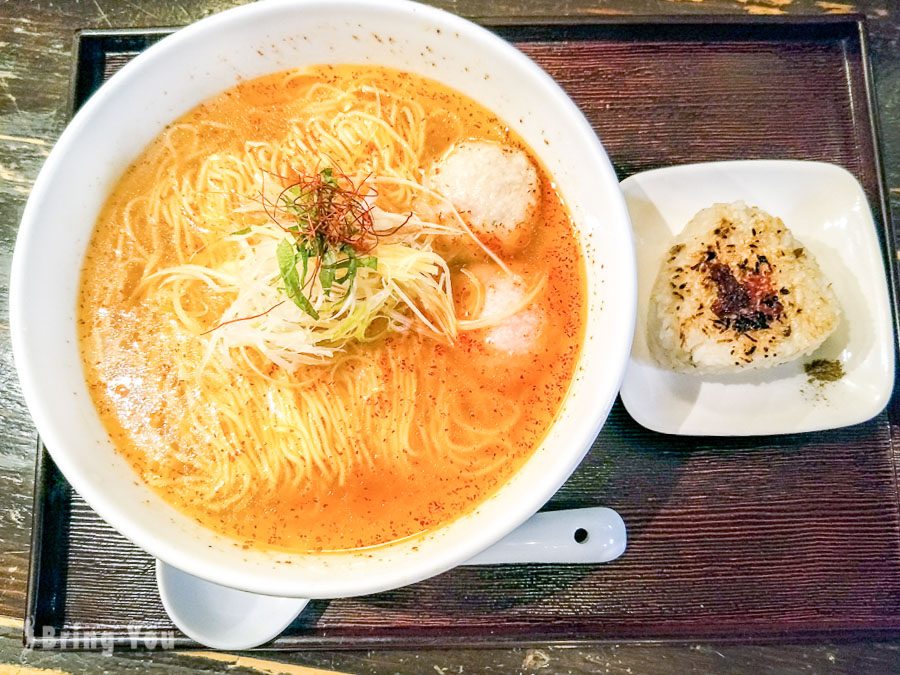
The spicy and salty seafood fish bone ramen is very appetizing, not too spicy to eat, and quite mellow to drink. The ramen noodles are thin and made from a mixture of two types of flour. Compared to the noodles from famous ramen shops, they are not particularly distinctive and have a slightly elastic and soft texture, but not too soft, and the taste is not amazing.
The ingredients used in this ramen shop are different from other shops. They use seafood-based fish balls and shrimp balls, which are very large in size. The taste of the two balls is very different when eaten together. One is delicious, while the other may not be to everyone’s liking.
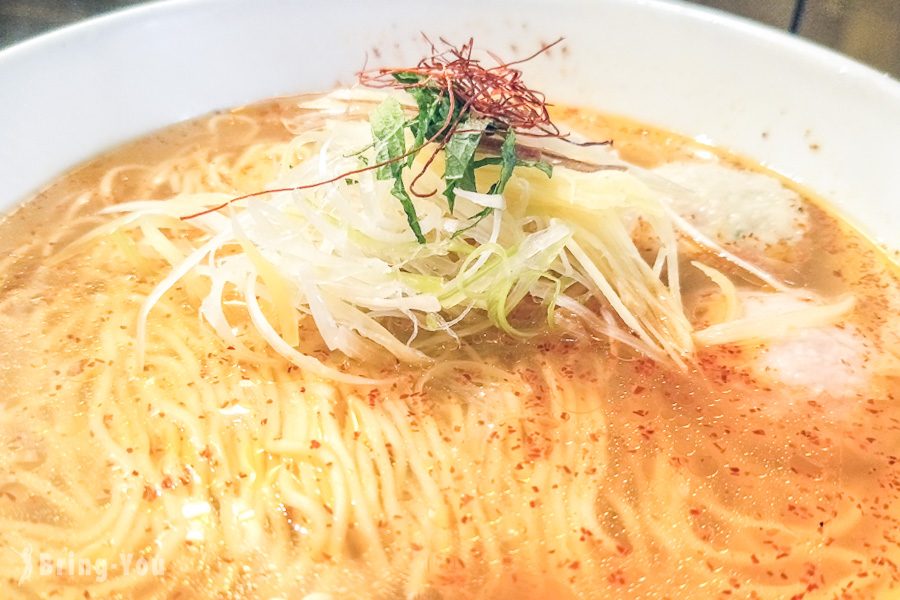
The rice ball looks crispy and fragrant. The recommended way to eat the rice ball with seafood and fish bone ramen at the Noodle House Sea God is to first eat the ramen and then put the rice ball into the soup to eat.
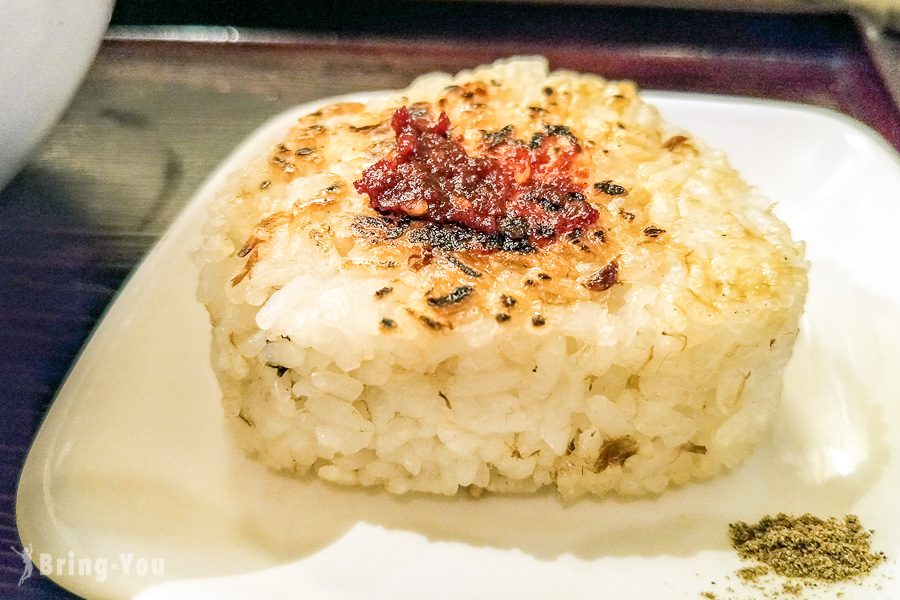
Salted Seafood Fish Bone Ramen/Rice Ball Not Included (830 yen)
As for the original salted seafood fish bone ramen from Piao’er Dian, the soup is not greasy at all, very refreshing with a fishy flavor. Basically, it’s like drinking fresh fish soup, and the saltiness is completely suitable for Taiwanese people. It goes against the Japanese style of heavy oil and salt, but some may find it a bit too light. If you prefer a stronger flavor, Piao’er Dian recommends adding some spicy flavor to make it less like drinking fish soup noodles.
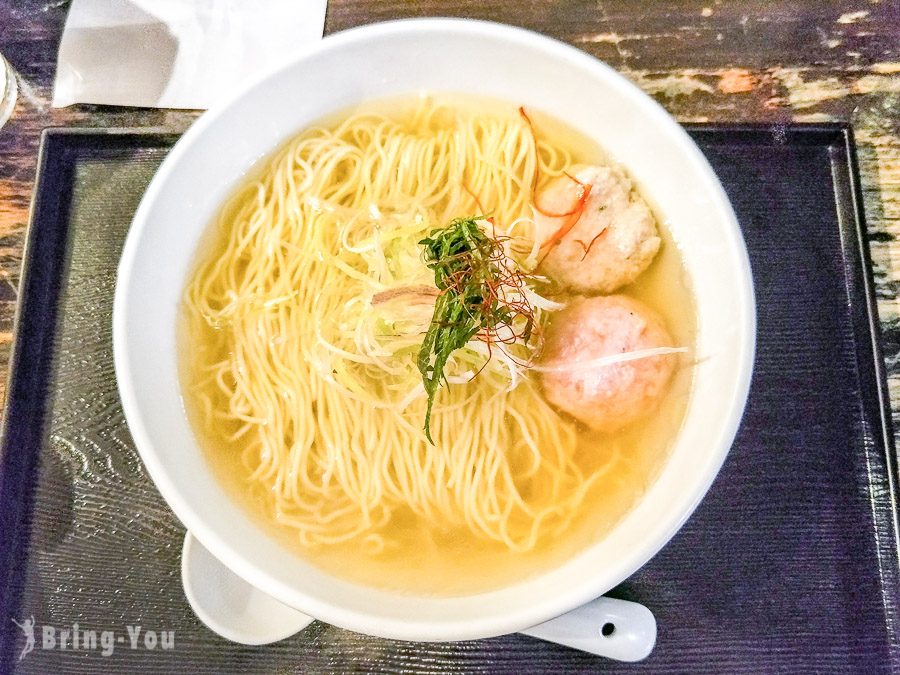
After finishing the ramen, Piaor snatched a rice ball from Xiao V and added it to my plain soup. The crispy rice grains and fish broth tasted pretty good together.
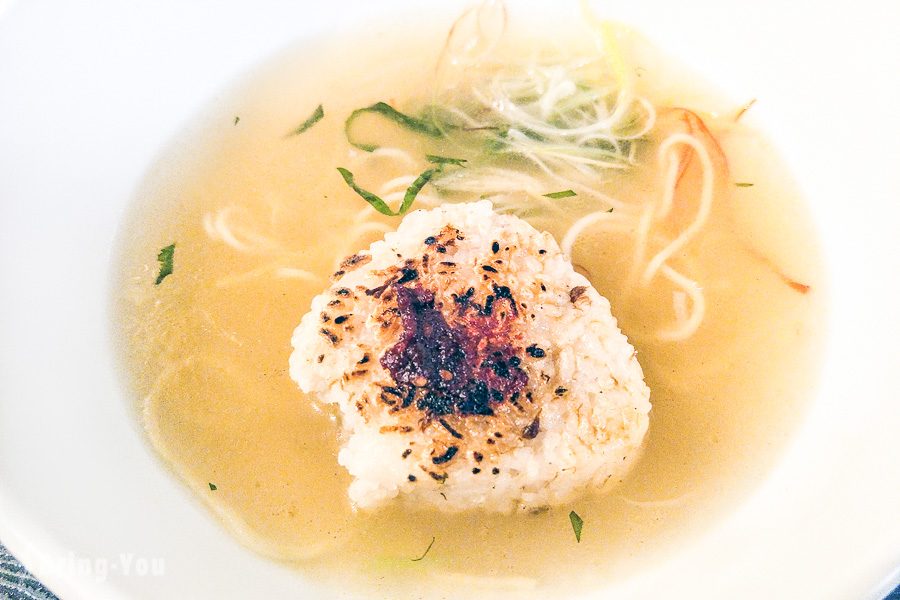
When tasting the Shinjuku ramen “Menya Kaijin”, Floer actually thinks it’s not a must-eat food in Tokyo, but if you know you don’t like the heavy oil and saltiness of Japanese ramen, and you like fish soup and seafood, Menya Kaijin is really a good choice. The seafood-flavored soup ramen is really good, but the only small flaw is that the ramen noodles are not distinctive enough.
Staying in Shinjuku makes dining super convenient: Compare Shinjuku accommodations
More Recommended Refreshing Tokyo Ramen
- 【Tokyo Roppongi】AFURI Yuzu Shio Ramen, a popular ramen shop featured in the Michelin Guide
- 【Tokyo Ginza Cuisine】Ginza Kagari Truffle Chicken White Soup Ramen, truly delicious as recommended by Michelin
Ultimate Tokyo Food Guide: 20 Best Japanese Foods to Try in Tokyo
